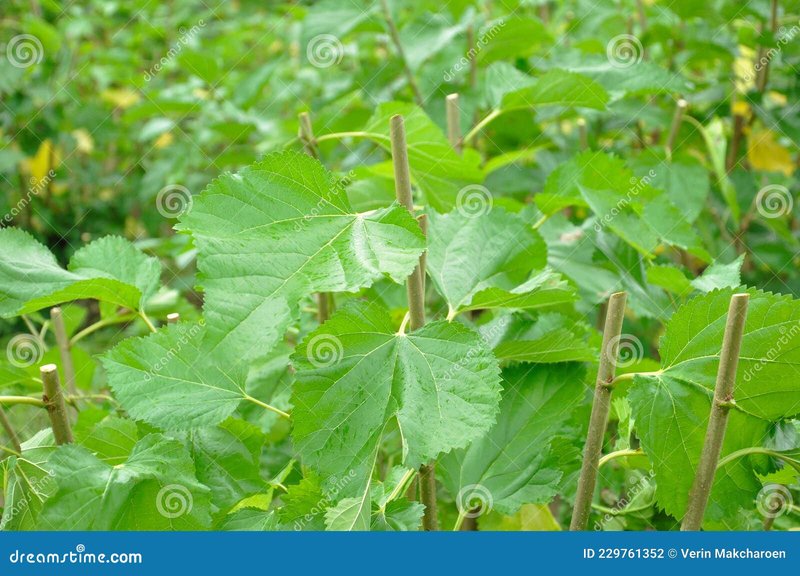
So, let’s dive into how to properly prepare these leaves for your little silk-producing buddies. If you’re new to this, don’t worry—I’ll walk you through each step as if we were sitting down for a cup of coffee together, chatting about the wonders of sericulture. Plus, I’ll sprinkle in some tips and tricks that can make the process smoother, ensuring your silkworms get the best munchies possible.
Why Mulberry Leaves Are Essential for Silkworms
Understanding the role of mulberry leaves in a silkworm’s diet is crucial. Think of mulberry leaves as a gourmet meal that silkworms simply can’t resist. They provide the essential nutrients and energy that silkworms need to grow. When silkworms munch on these leaves, they absorb proteins, vitamins, and minerals, which are vital for their development.
Here’s the thing: silkworms are picky eaters. They thrive on young, tender leaves rather than older, tougher ones. Freshness is crucial; stale or dried-out leaves won’t do much to help them grow. The right kind of mulberry leaves will not only keep your silkworms happy but also boost silk production. So, investing a little time in preparing these leaves properly is worth it!
Selecting the Right Mulberry Leaves
Before you even start preparing the leaves, you need to select the right ones. There are different varieties of mulberry trees, but the Morus alba (white mulberry) is the most commonly used for silkworm feeding. When picking leaves, look for young, vibrant green ones that are soft and flexible.
Here’s how you can choose the best leaves:
- Color: Aim for a deep green hue. Yellow or brown leaves indicate they are old or unhealthy.
- Texture: The leaves should be smooth and tender. Rough or brittle ones aren’t suitable.
- Size: Smaller leaves are generally better, as they are younger and more nutritious.
Once you’ve selected your leaves, it’s time to prepare them. Just like cooking a meal, the quality of your ingredients makes a difference!
Cleaning the Mulberry Leaves
Cleanliness is key when preparing mulberry leaves for silkworms. After all, nobody wants to serve a dirty dish! The leaves can harbor dirt, pests, or even pesticides, which can harm your silkworms. To clean them effectively, follow these simple steps:
1. Rinse the Leaves: Start by placing the leaves in a colander or a large bowl and gently rinsing them under cool, running water. This helps to remove dirt and any unwanted critters.
2. Inspect for Damage: As you rinse, check each leaf for holes, spots, or wilting. Remove any damaged leaves, as they won’t provide the best nutrition.
3. Dry the Leaves: After rinsing, gently pat the leaves with a clean towel or let them air dry for a few minutes. This prevents excess moisture, which can lead to mold—a definite no-no for your silkworms.
Cutting the Leaves for Feeding
Now that your leaves are cleaned and dried, it’s time to cut them for easy feeding. Silkworms prefer smaller pieces that they can wrap their little mouths around easily. Here’s how to cut them:
1. Gather Supplies: You’ll need a clean cutting board and a sharp knife or scissors. Having fresh tools will keep everything hygienic.
2. Slice into Small Pieces: Aim for pieces that are about 1-2 inches in size. This makes it simple for the silkworms to eat without wasting any leaves.
3. Grouping by Size: If you have very small silkworms, you might want to cut the leaves even smaller. Grouping the leaves based on the size of your silkworms helps ensure they’re all getting the right amount of food.
By cutting the leaves into manageable sizes, you’ll keep your silkworms engaged and satisfied at mealtime.
Storing Prepared Mulberry Leaves
You might end up with more leaves than your silkworms can eat in one sitting. Don’t panic! There’s a way to store them properly so they stay fresh:
1. Use Airtight Containers: Place the cut leaves in an airtight container or a resealable plastic bag. Removing as much air as possible helps prevent spoilage.
2. Refrigerate for Freshness: Store the container in the refrigerator. This can prolong the leaves’ life for a week or more, allowing you to feed your silkworms over several days without having to prepare more leaves.
3. Check Regularly: Make it a habit to check on your stored leaves. If you see any wilting or discoloration, remove those leaves before they affect the rest.
Keeping your mulberry leaves fresh and ready is just as important as preparing them.
Feeding Your Silkworms
With everything prepped and stored, it’s time to feed your silkworms. This is the fun part! You’ll want to make sure you’re giving them the right amount of food:
1. Feeding Frequency: Young silkworms eat often—up to three times a day if you can manage it! As they grow, you can reduce feeding to once in the morning and once in the evening.
2. Portion Control: Start with a small handful of leaves and watch how quickly they consume them. After a few days, you’ll get a sense of their appetite and can adjust portions accordingly.
3. Remove Uneaten Leaves: After feeding, check for any leftovers. If the silkworms aren’t eating certain leaves, it’s best to remove them to maintain a clean and healthy environment.
Feeding your silkworms with freshly prepared mulberry leaves is crucial for their growth and, ultimately, for silk production.
Common Mistakes to Avoid
Even experienced silkworm raisers can sometimes slip up. Here are a few common mistakes to dodge, ensuring your silkworms stay healthy and productive:
1. Using Old Leaves: Always try to use fresh leaves. Older leaves don’t provide the same nutrients and can lead to health issues for your silkworms.
2. Overfeeding: It’s easy to think that more food equals happier silkworms, but this isn’t always the case. Overfeeding can lead to waste and unhealthy living conditions.
3. Neglecting Cleanliness: Make sure everything—leaves, containers, and feeding areas—stays clean. Bacteria and mold can be detrimental to silkworm health.
By avoiding these slip-ups, you’ll foster a thriving environment for your silkworms.
Closing Thoughts
Preparing mulberry leaves for silkworm feeding might seem like a small task, but it plays a huge role in their growth and the quality of the silk they produce. Remember, it’s all about providing the right nutrition while keeping everything clean and fresh. By following these steps—from selecting the best leaves to proper feeding—you’ll set your silkworms up for success.
Honestly, the more you delve into this process, the more rewarding it becomes. You’re not just feeding silkworms; you’re nurturing a fascinating life cycle that contributes to a beautiful craft. So go ahead, get those leaves ready, and watch your silkworms thrive!

